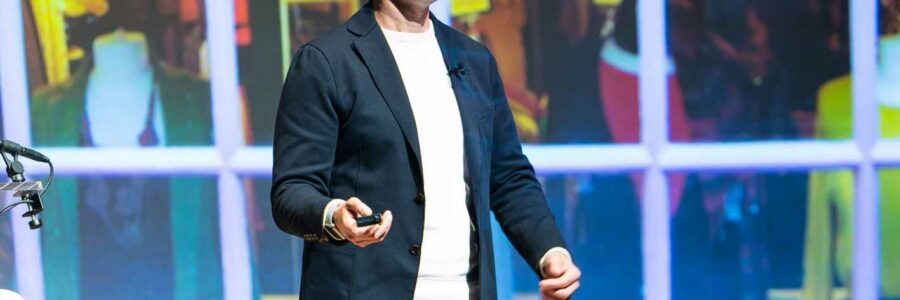
James Reinhart’s Resale Revolution
James Reinhart is now preaching the gospel of resale and its transformative potential for retail from a bigger platform — that of a public company chief executive officer.
Reinhart, who has been CEO of ThredUp since it was founded in 2009, was back in front of investors and analysts on Wednesday as the company posted its first quarterly results.
The first outing was a mixed bag — net losses widened, but gross profits rose and while analysts seemed pleased, the stock fell. But the results put the company’s own development and the resale sector at large in a clearer light and give more context to Reinhart’s message.
The sermon hasn’t changed, but the audience is paying more attention, particularly when it comes to the firm’s Resale as a Service business and how quickly it can scale.
“Every brand needs a full price strategy, a markdown strategy, an offprice strategy, and outlet strategy and an e-commerce strategy, right?” Reinhart said. “There’s a bunch of strategies about where their product goes and how it gets priced and who the customer is. Resale now is rising to the conversation — what is your resale strategy?”
He said the smartest people in retail are realizing, “This is happening and can we figure out how to be a part of it or it’s going to pass us by.”

Related Gallery
They Are Wearing: Springtime Fashion in and New York, Los Angeles, and Austin
ThredUp is taking a holistic approach to the problem, endeavoring to build this new channel both for its own business resale operations and so brands can plug into it.
The company sends Clean Out Kits to consumers so they can clear out their closets, takes the goods on consignment, cleans and processes them and sells them online. Outside retailers can tap into this network in a variety of ways, from offering bags to setting up shops of secondhand goods.
Gap, Madewell, Walmart and others already work with ThredUp.
But the market is still growing quickly and there are other players, including The RealReal in luxury and Poshmark with its peer-to-peer platform.
Resale is still at the more-the-merrier point where additional players help grow the market overall.
“All resale is good resale,” Reinhart said.
On a conference call with Wall Street analysts, the CEO was asked about Lululemon Athletica Inc.’s program to buy back looks from consumers for resale. But Reinhart sounded a note of confidence.
“We love what Lululemon is doing,” he said. “But if they’re going to want to do it big, they’re going to have to partner with someone with real scale. I think it’s really good that these brands are dabbling.”
In the meantime, ThedUp has been bringing more retailers into the fold.
This week, the company said it would power the Vera Bradley’s resale business and offer ThredUP Clean Out Kits to in-store and online customers.
But ThredUp still has to figure out how to make this new sector profitable, although it has some time on that score.
The company’s first-quarter net losses widened to $16.2 million, or 86 cents a share, from $13.2 million, or $1.23, a year earlier. Gross profits — which the company identified as the best measure of its results as it migrates more toward the consignment model and buys fewer pieces directly from consumers — rose 21.7 percent to $39.7 million.
Revenues for the quarter ended March 31 grew 15.2 percent to $55.7 million as active buyers increased 14 percent to 1.29 million and orders rose 18 percent to 1.13 million.
Investors seemed a little spooked by the quarter, sending ThredUp’s shares down 6.9 percent to $18.65 in afterhours trading Wednesday, but several analysts on a conference call with management extended their congratulations on the quarter.
Shares of the company priced at $14 in its IPO and the stock ended its first day on March 26 at $20.
If the company can tap into the growth it sees in its research, it will be able to keep growth-happy Wall Street happy for some time.
According to data from ThredUp’s upcoming 2021 Resale Report, 80 percent of U.S. consumers plan to refresh their closets once the pandemic is over.
The study, which will be released in full later, also found;
• 159.4 million U.S. shoppers plan to get rid of clothing once the pandemic is over.
• 155.9 million U.S. consumers plan to buy items after the pandemic is over.
• 34.4 percent of U.S. consumers plan to buy items for events that were paused (work, travel).
• 31.1 percent of U.S. consumers plan to buy items to refresh their style.
More from WWD:
Dealmaking Heats Up in Fashion
Luxury Acquisitions Just Beginning as Big Players Consolidate: HSBC
The Politics of Fashion: A New World Order
Source: Read Full Article